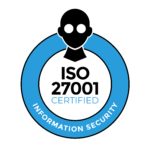The Sarbanes-Oxley Act (SOX) represents one of the most significant regulatory changes to corporate governance and financial reporting since the Securities Act of 1934. Enacted in 2002 following high-profile corporate scandals at companies like Enron and WorldCom, SOX fundamentally transformed how publicly traded companies manage their financial processes and internal controls. Understanding SOX compliance is essential for your organization if you're subject to these requirements, as the costs and complexities continue to evolve with changing business environments and regulatory expectations.
What it is
SOX originated from the corporate accounting scandals of the early 2000s that devastated investor confidence and cost shareholders billions of dollars. The Act was sponsored by Senator Paul Sarbanes and Representative Michael Oxley and signed into law by President George W. Bush on July 30, 2002.
The governing bodies overseeing SOX compliance include the Securities and Exchange Commission (SEC), which enforces the requirements, and the Public Company Accounting Oversight Board (PCAOB), which was established by the Act to oversee public company auditors. The primary purpose of SOX is to protect investors by improving the accuracy and reliability of corporate financial reporting through enhanced transparency, accountability, and internal controls.
Core requirements and principles
SOX contains 11 titles with various sections, but several key provisions form the backbone of compliance requirements:
Section 302 (Corporate Responsibility) requires CEOs and CFOs to personally certify the accuracy of their companies' financial statements and internal control systems. These executives face criminal liability if they knowingly certify false information.
Section 404 (Management Assessment of Internal Controls) has two critical subsections: 404(a) requires management to assess and report on the effectiveness of internal control over financial reporting annually, while 404(b) requires external auditor attestation of management's internal control assessment.
Section 906 (Criminal Penalties) establishes severe consequences for executives who knowingly certify false financial statements, including fines up to $5 million and imprisonment up to 20 years.
Additional provisions include requirements for independent audit committees, restrictions on auditor services to prevent conflicts of interest, real-time disclosure of material changes, and whistleblower protections for employees who report violations.
Types and categories
SOX compliance requirements vary based on company characteristics and exemption status. Large public companies (those with public float above $75 million or not qualifying as emerging growth companies) must comply with all SOX requirements, including both Section 404(a) and 404(b).
Smaller reporting companies and certain emerging growth companies may qualify for exemptions from Section 404(b) auditor attestation requirements, though they must still comply with management assessment requirements under 404(a). These exemptions were created through later amendments to reduce compliance burdens for smaller entities.
Foreign private issuers have modified requirements and may use home country governance standards in some areas, though they must still meet core financial reporting and certification requirements.
Compliance process
Achieving SOX compliance requires a structured, year-round approach with several key phases. The planning phase involves conducting risk assessments, updating control documentation, and developing testing plans based on identified risks and control changes.
The execution phase typically spans 6-9 months and includes management testing of key controls, remediation of any control deficiencies, and preparation of the management assessment report. For companies subject to 404(b), external auditors simultaneously conduct their attestation work.
Reporting and certification occur at fiscal year-end when management issues its assessment report and, if applicable, auditors provide their attestation opinion. CEOs and CFOs must certify quarterly and annual reports throughout the year.
Key roles include executive management (ultimate responsibility), internal audit teams (testing and assessment), IT personnel (system controls), process owners (operational controls), and external auditors (attestation work for applicable companies). Most organizations begin planning 3-4 months before fiscal year-end and complete testing 2-3 months before year-end to allow time for remediation.
Common challenges
Organizations frequently struggle with resource constraints, as compliance demands significant time from personnel across multiple functions. A typical SOX program requires 5,000-10,000 hours annually from internal audit teams alone, with 70% often spent on administrative tasks.
Technology integration challenges arise as companies must ensure their control frameworks keep pace with system changes, cloud migrations, and digital transformations. Legacy systems and data integration issues compound these difficulties.
Scoping and risk assessment complexities increase as organizations grow, acquire new businesses, or expand internationally. Determining which processes and controls are in scope for testing requires significant judgment and can lead to over-testing or missed risks.
Staff turnover and knowledge retention problems persist, particularly given specialized SOX expertise requirements and the time needed to train new team members on complex control frameworks.
Benefits of compliance
SOX compliance delivers substantial operational benefits beyond regulatory requirement fulfillment. Enhanced internal controls often identify process inefficiencies, leading to improved operational performance and reduced risk of errors or fraud.
Investor confidence and market valuation benefits are significant, as compliance demonstrates your commitment to transparency and good governance. Studies suggest SOX-compliant companies may achieve better access to capital markets and lower borrowing costs.
Management decision-making improves through better financial reporting processes and enhanced understanding of business risks and controls. The discipline required for compliance often strengthens your overall management capabilities.
Risk management benefits include early identification of control deficiencies, improved fraud prevention, and better preparedness for other regulatory requirements or business challenges.
Who needs it and when
SOX applies to all companies with securities registered under the Securities Exchange Act of 1934, including most publicly traded companies in the United States. Foreign companies with U.S. listings must also comply, though some provisions may be modified.
IPO companies must begin compliance immediately upon going public, though emerging growth companies may delay 404(b) compliance for up to five years. Companies acquired by public entities typically have one year to achieve compliance.
Private companies considering going public should begin SOX preparation 12-18 months before their anticipated IPO date, as implementing effective internal controls takes considerable time and testing.
Preparation tips
Start with a comprehensive risk assessment to identify all significant accounts, processes, and controls that could materially impact financial reporting. This scoping exercise forms the foundation for all subsequent work.
Invest in technology solutions early, as manual processes become unsustainable at scale. GRC (Governance, Risk, and Compliance) platforms can automate documentation, testing workflows, and reporting processes. However, smaller organizations should conduct cost-benefit analyses before investing in expensive technology solutions.
Develop standardized documentation for all key controls, including control descriptions, testing procedures, and evidence requirements. Consistency in documentation reduces training time and improves testing efficiency.
Build cross-functional teams with representatives from finance, IT, operations, and internal audit. SOX compliance affects multiple business areas, requiring coordinated effort and communication.
Engage external advisors early in the process, whether for assessment assistance, technology implementation, or external audit preparation. Their experience can help you avoid common pitfalls and establish efficient processes from the start.
Conclusion
SOX compliance remains a critical requirement for public companies, with costs and complexity continuing to evolve. While compliance expenses can be substantial—typically ranging from $1-2 million annually for most organizations—the benefits in terms of improved controls, investor confidence, and operational efficiency often justify the investment.
Organizations facing rising compliance costs should focus on risk-based approaches, technology automation, and process optimization to maximize efficiency. The key is viewing SOX not merely as a regulatory burden but as an opportunity to strengthen your overall governance and risk management capabilities.

Related Posts
Stay connected
Subscribe to receive new blog articles and updates from Thoropass in your inbox.
Want to join our team?
Help Thoropass ensure that compliance never gets in the way of innovation.












.png)